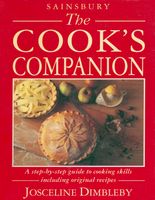Advertisement
Pâtés and Terrines
Published 1991

In French the word pâté means pastry; and originally all pâtés were pork mixtures wrapped in pastry, whereas terrines were the same kind of mixture without the pastry, cooked in an earthenware dish called a terrine. Nowadays, the distinctions are somewhat blurred, but I think of a pâté as a smoothly pureed mixture, not always cooked in a dish, and a terrine as a more homely affair with layers of coarsely chopped meats and pork fat, often wrapped entirely in strips of streaky bacon, which both adds flavour and stops the meat drying out during the cooking. Cooking the sealed terrine in a bain-marie also helps keep in the moisture, and a certain amount of fat is necessary for both succulence and flavour. When onions or other vegetables are added to a terrine, they must be gently fried in butter first to soften them.

